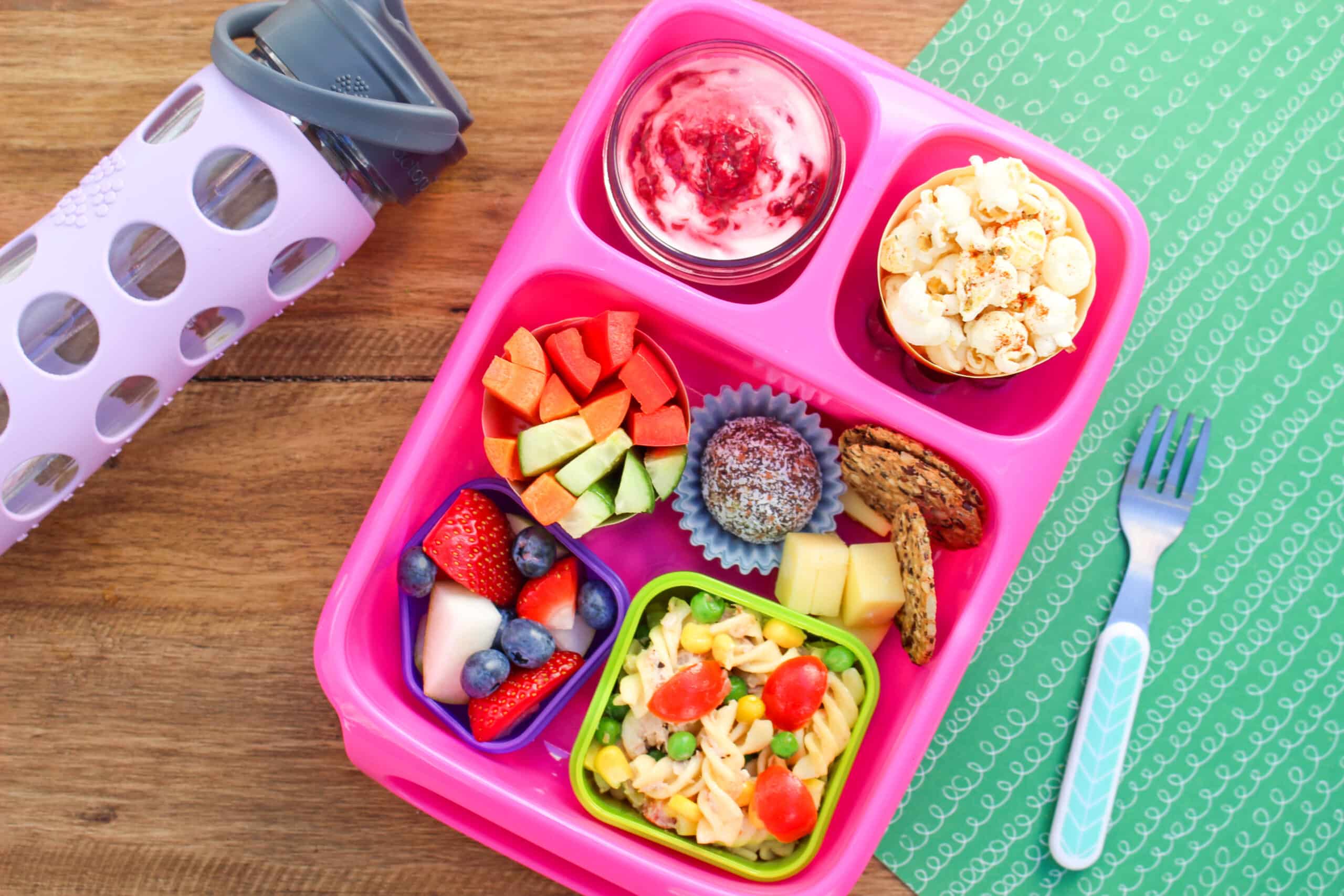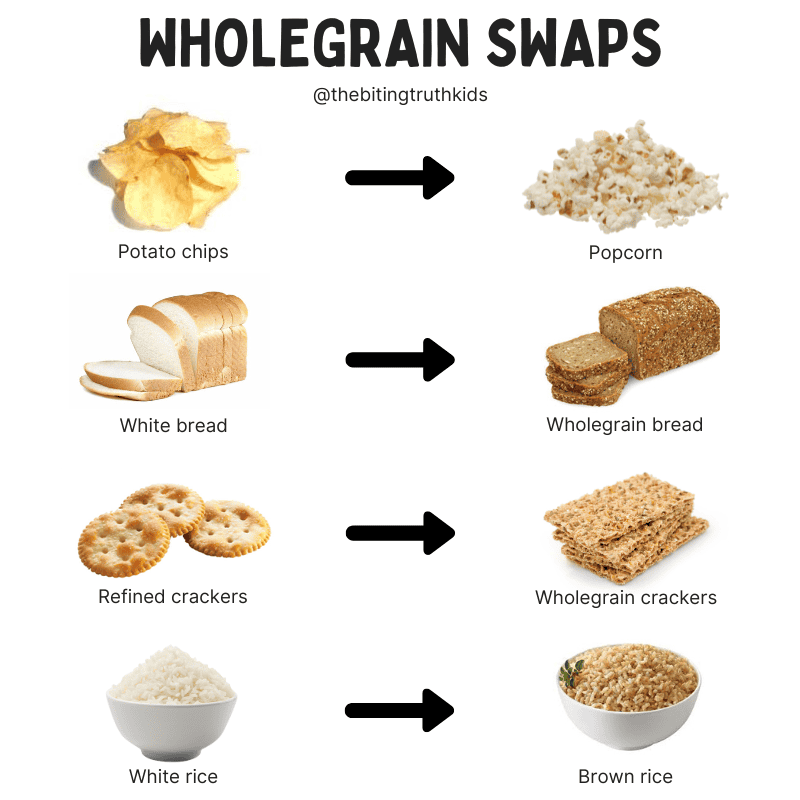
The beginning of the school year isn’t far away, and your task of packing school lunch boxes draws ever closer. If this is your first time sending your kiddies off to school, then packing school lunchboxes may seem like a daunting task.
Not to worry! We want to take away some of the pressure and stress, we’re sharing our top tips for packing a healthy lunchbox for your little ones, and saving you time and stress in the process.
1. A little bit of prep goes a long way
Just like you might come up with a rough idea for what you’ll feed your family for dinners throughout the week, having a game plan for lunchboxes will help you feel more organised and help avoid those last minute dashes to the supermarket, or the endless days of canteen lunch orders.
Planning ahead is the best way to ensure you are offering your children a balanced lunchbox which ticks all the elements of a healthy lunchbox. These include:
- Fresh fruit (apples, oranges and chopped watermelon are great options)
- Vegetables (try cut up carrots or capsicum sticks)
- Dairy (cheese, milk or yoghurt)
- Wholegrains (think wholegrain bread or brown rice crackers)
- Lean meat or alternatives (boiled eggs, tuna and smoked salmon are easy options)
- And, of course, water!
Before each week, consider what balanced meals you’ll offer your kids throughout the week ahead. Make a list of the ingredients you’ll need for the week, and you can grab everything all at once during your weekly shop.
Then, once you’ve got all your supplies, dedicate an hour or so on a Sunday to prepping the more time-consuming elements like boiled eggs or a source of protein. Then, each night you just have to chop a few vegetables and pieces of fruit, and assemble your well-planned meals!
2. Go for wholegrain
Carbohydrates are the main source of energy for your body. It’s particularly important to fuel your child with the best quality energy sources when they’re spending their day at school learning, playing and growing.
This means that the type of carbohydrates you put in your children’s lunch box is an important consideration. Try to always choose wholegrain or high fibre varieties of bread, cereal, rice, pasta or noodles. These are the most nutrient-rich options, and will provide your child with longer lasting energy throughout the day, and give them the nutritional support they need.

3. Don’t save veggies for dinner
For many children, dinner is the only meal of the day where they’ll eat veggies. While it’s great to serve veggies with dinner, this simply isn’t enough to meet the nutrient needs of your kiddies! The chances of your children meeting their recommended daily intake of vegetables all in one sitting is very low, so they’ll be missing out on vital nutrients and minerals!
To give your child more opportunities to eat enough veggies, it’s important to add them to your children’s lunch boxes.
Here are some ideas of how to include veggies in their lunchboxes:
- Chop up vegetable sticks and serve with a dip, such as hummus
- Savoury veggie muffins (you can pack heaps of veggies in these without the kids even noticing!)
- Whip up a vegetable-based dip and serve with wholegrain crackers
- Include a handful of cherry tomatoes with cheese cubes
Make vegetables fun for your children to eat and take advantage of the opportunities their school lunchbox offers to encourage them to eat veggies throughout the day.
4. Get your child involved
Get your children involved in preparing their lunchbox from an early age. Whether it’s putting toppings onto a pizza for tomorrow’s lunch, mixing together ingredients for vegetable muffins, or choosing what fruit they want at the supermarket, children are much more likely to eat things they have helped prepare, as it gives them a sense of independence.
5. Be mindful of pre-packaged snacks
According to Australian research, Aussie kids eat on average three pre-packaged snacks as part of their lunchbox each day.
Many pre-packaged snack options from the supermarket are laden with added sugars, artificial flavours and colours and preservatives, meaning they’re not supporting the nutritional or energy requirements of your children.
But not to worry, you don’t have to make everything you put into your child’s lunchbox from scratch. You can still include packaged options, you just need to make smart choices. Here are some of our favourites:
- Fava beans (The Happy Snack Company Fav-Va beans are delicious!)
- Messy Monkeys Whole Grain Popcorn (made from Aussie ingredients with no artificial colours, flavours or nasties)
- Tamar Valley Kids Greek Yoghurt Pouches (no added sugar or sweeteners, and a great source of calcium)
- Petite Miam No Sugar Added yoghurt pouch (contains probiotics to support gut health)
- Food United Bush Bites bars (great source of plant-based protein)
- Brown rice crackers with cheese (good source of lasting energy)
When choosing packaged snacks, we highly recommend treating the health food aisle with suspicion. Just because a product is in the health food aisle does not guarantee it is healthy!
The Bottom Line
There you have it, these simple tips can make life super easy when it comes to packing your child’s lunchbox for school. Remember, preparation is key! It doesn’t have to take you hours in the kitchen to create a balanced, healthy lunch box for your kids. You can support their energy and nutrient requirements by just being organised and prepared!
—
Notes
- For more delicious kid-friendly recipes, click here.
- Check out The Biting Truth School Lunchbox eBook here.
